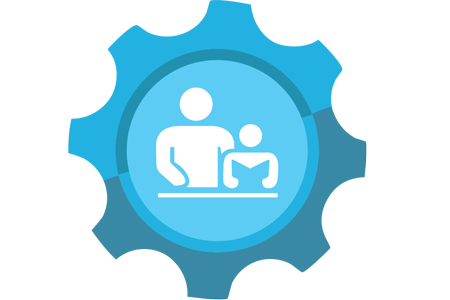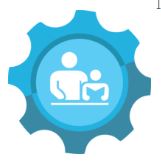Future Ready Reflection: Gear 1

My district superintendent has created an initiative to become “Future Ready” as defined by the Department of Education and Alliance for Excellent Education. I will share some of my thinking here as I participate in the self evaluation process.

(Views expressed here are not necessarily those of my district)
Gear 1: Curriculum, Instruction and Assessment

Here are two of the indicators that stand out for me:
Strategies for Building College and Career Readiness: If a student gets a high score on a standardized test, such as the PARCC test, or the SAT or ACT Test, do you consider them to be College & Career Ready? In some informal research I’ve done, it seems to me that test scores are not a good indicator of future success. One of the things that bothers me, in the state of Colorado, is that test scores are accepted, under the new Graduation Guidelines, as an indicator of “College and Career Readiness.” I am hopeful, as our leadership committee addresses this misalignment, that we can do better in defining what College and Career Readiness looks like for our learners.
One of the activities I like to do with groups – parents, teachers, administrators, and students – is to have them think about the most powerful learning experiences they’ve ever had. Common elements of these learning experiences, that are revealed every time, involve learning that requires them to think critically, be creative, collaborate, problem solve, and has meaning or purpose, to the point that they were highly motivated and engaged in the task, and remember what they learned years later – still applying and transferring that learning as they seek to gain better and deeper understanding. I believe that we need to dramatically increase the opportunities for our learners to engage in this kind of learning. Then, we can truly know that they are college and career ready.
Research-based Practices for the Use of Technology in Learning: The reality is that there is still very little research that can isolate technology as the “thing” that brings success in learning. Rather, it is a tool used by creative teachers who design learning with the end in mind, and in ways that motivate and inspire kids.
Tech & Learning Newsletter
Tools and ideas to transform education. Sign up below.

I’ve explored many of the ideas set forth by the International Center for Leadership in Education. I love the Rigor & Relevance Framework, and we use that frequently to help teachers design learning that is meaningful, relevant and engaging. Another idea from this group that stands out for me and makes me pause about this portion of Gear 1 in the Future Ready Framework is their work around the concept of “Next Practices,” especially as we seek to move towards transformational learning. Not just “thinking outside the box” but “building a new box.” Technology tools come and go – often before any robust research can be conducted showing true value. It is a fast moving target. We shouldn’t be hung up on a particular tool, especially when we are gearing up for personalized learning. Let the students – who own their learning – select the best tool for the task. Teachers can learn to design learning that gives these kinds of opportunities. No longer do we have to “teach to the middle.” We can use technology to go beyond differentiation to personalize not just final project, but the time, place, path and pace of learning.
cross posted at Innovations in Education
Nancy White is the 21st Century Learning & Innovation Specialist for Academy School District 20, providing professional development on 21st century skills and technology integration, and working with the IT-ES team to carry out the district’s 21st Century Learning Plan. Nancy served on an ad-hoc team to help with the integration of 21st century skills into Colorado’s revised content standards, and co-authored The Colorado Learner’s Bill of Rights. Read more at Innovations in Education.
